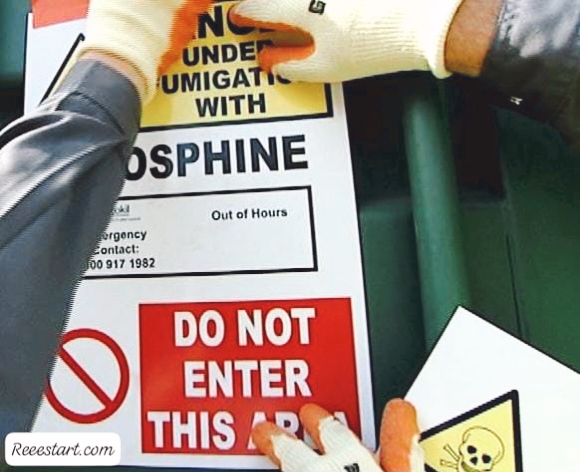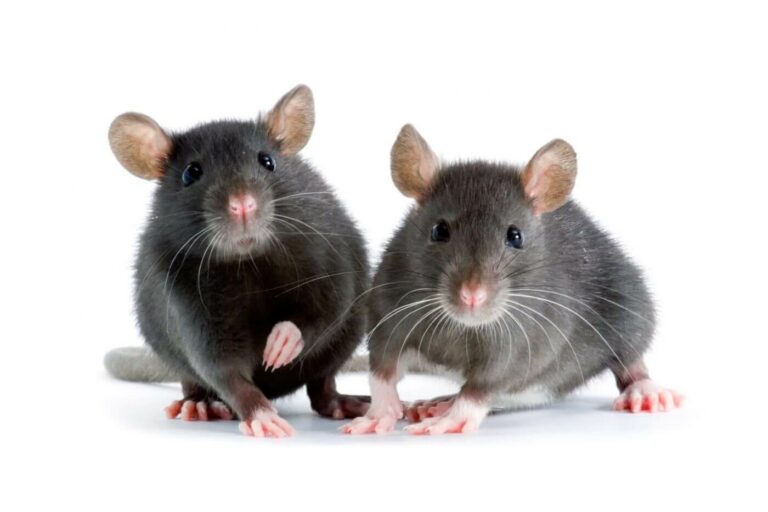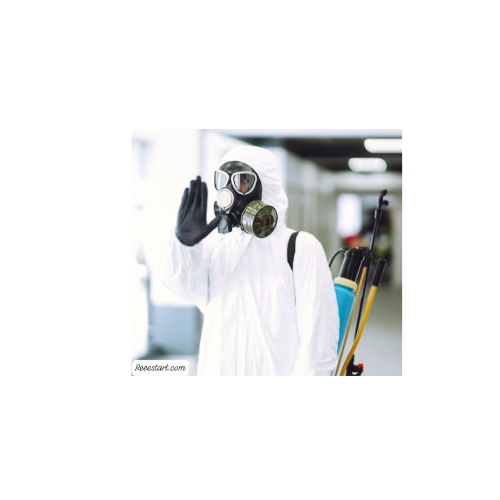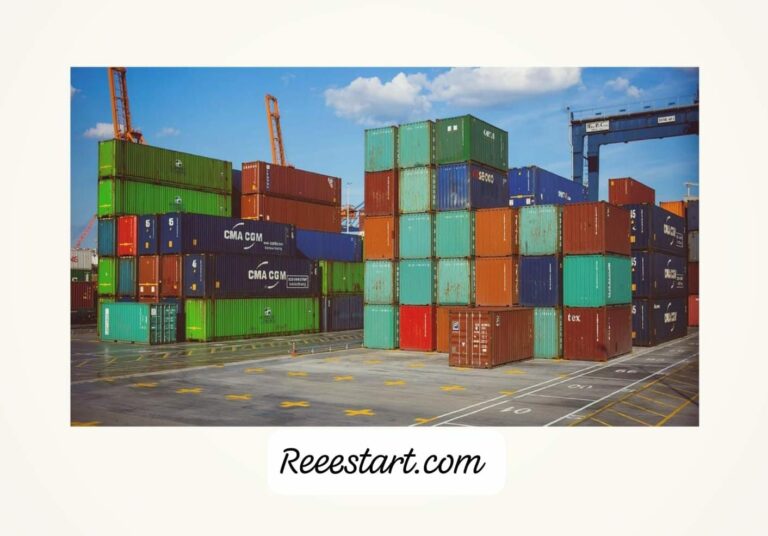Phosphine fumigant is a highly toxic gas used to control insect infestations in stored products like grains, nuts, and dried fruits, Phosphine fumigation is a well-established, highly effective, and cost-efficient method for pest control in stored agricultural products. It plays a crucial role in preserving the quality and safety of agricultural commodities and ensuring that food products are free from harmful pests and pathogens. This fumigant has become a global standard for pest management, offering numerous benefits that make it the go-to solution for agricultural engineers, fumigation professionals, and supply chain managers. In this article, we will explore the reasons why phosphine is considered the best fumigant for agricultural pest control worldwide.
Phosphine fumigant
Chemical Composition, Release Mechanism, Temperature-Dependent Behavior, and Residual Products
- Phosphine (PH₃) is a colorless, flammable gas with a strong, distinctive odor. It is primarily used as a fumigant due to its effectiveness against a wide range of pests, particularly in stored agricultural products. Phosphine’s chemical composition is simple, consisting of one phosphorus atom and three hydrogen atoms. It is a highly reactive molecule, capable of releasing potent toxic gases that target pests in confined environments.
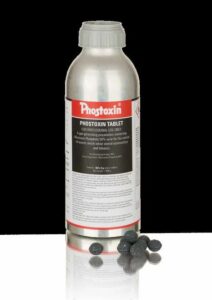
Chemical Composition and Structure
Phosphine is a compound made of phosphorus (P) bonded with three hydrogen atoms (H), represented by the chemical formula PH₃. The phosphorus atom in phosphine is at the center of a trigonal pyramidal molecular structure, with the hydrogen atoms arranged around it. This structure makes phosphine a highly reactive and unstable gas, contributing to its effectiveness in pest control. Phosphine can also react with water, releasing hydrogen gas and phosphoric acid, which helps to release the fumigant’s active ingredient slowly over time.
Phosphine Release Mechanism
Phosphine is typically sold in solid forms such as tablets, pellets, or powders. These solid forms, often combined with other substances like magnesium or aluminum phosphide, release phosphine gas when they react with moisture or water vapor in the environment. This reaction occurs in storage facilities, containers, or transport vehicles, where these solids are placed inside sealed areas.
The reaction is as follows:
- Aluminum phosphide (AlP) + Water (H₂O) → Phosphine (PH₃) + Aluminum hydroxide (Al(OH)₃)
- As moisture from the environment interacts with the solid material, it catalyzes the chemical reaction, producing phosphine gas. The gas gradually diffuses through the sealed area, targeting and killing the pests within. Since phosphine is a gas, it can penetrate even the smallest cracks and crevices, reaching pests hidden in stored grains, seeds, and other commodities.
Temperature-Dependent Release of Phosphine
The rate at which phosphine gas is released depends significantly on temperature. At higher temperatures, the chemical reaction between phosphide solids and moisture accelerates, causing more rapid generation and dispersion of phosphine gas. Conversely, in colder conditions, the reaction slows down, leading to a slower release of gas.
- For example, at warmer temperatures (above 20°C or 68°F), the release of phosphine can be faster, making fumigation more effective in a shorter time frame. However, at low temperatures (below 10°C or 50°F), the gas is released more slowly, which can extend the fumigation process. This characteristic is particularly useful in regions where temperatures can fluctuate, as phosphine can still be effective in cooler environments, albeit with extended exposure times.
- This temperature dependency is crucial for adjusting fumigation strategies in different climates or seasons. In colder regions or winter months, longer fumigation periods may be necessary to achieve optimal pest control, ensuring that the pest populations are effectively eradicated.
Residual Products After Phosphine Release
Once the phosphine gas has been released and has had sufficient time to eliminate pests, the chemical reaction between phosphide solids and moisture leads to the formation of harmless byproducts. Specifically, when aluminum phosphide (AlP) reacts with moisture, it produces aluminum hydroxide (Al(OH)₃) and phosphine (PH₃) gas. The residual products, such as aluminum hydroxide, are non-toxic and safe for human consumption.
In other words, after the phosphine gas has dissipated, what remains are typically aluminum hydroxide (Al(OH)₃) or aluminum oxide (Al₂O₃), which are not harmful and pose no risk to the agricultural products. These compounds do not leave harmful residues, ensuring that the fumigated crops or products are safe for consumption or trade. This residue-free nature of phosphine makes it a preferred choice in fumigation, particularly for food-grade products.
Packaging and Distribution of Phosphine Products
Phosphine is commonly available in various forms for practical use, including tablets, pellets, and cylinders. The packaging typically includes labels with clear instructions for safe handling, application methods, and safety precautions. These products are designed to be easy to use and transport, making phosphine an accessible and cost-effective fumigant for large-scale agricultural operations.
In summary, the chemical composition of phosphine, its release mechanism via moisture-induced reactions, and its temperature-dependent behavior make it an ideal choice for pest control in agricultural settings. The ability to store it in solid forms, along with its flexible application in various temperature conditions, makes phosphine a versatile and reliable fumigant for managing stored-product pests globally. Furthermore, the fact that it leaves no toxic residues, with only harmless byproducts like aluminum hydroxide remaining, ensures that the agricultural products treated with phosphine are safe for consumption or trade.
Why Phosphine Fumigant is the Ideal Solution for Pest Control in Agriculture?
Phosphine Fumigant is the Ideal Solution for Pest Control in Agriculture because of the following’
Efficacy Against a Wide Range of Pests
Phosphine is highly effective in eliminating a broad spectrum of pests, including various stored-product insects like grain beetles, weevils, moths, and flour mites. It targets all stages of a pest’s life cycle, including eggs, larvae, and adults. This broad-spectrum control is essential in managing pests that are known to damage stored grains, seeds, and other agricultural commodities. Phosphine is effective against the following pests:
- Grain beetles (e.g., Tribolium castaneum and Sitophilus oryzae)
- Weevils (e.g., Sitophilus zeamais and Rhyzopertha dominica)
- Moths (e.g., Ephestia cautella and Plodia interpunctella)
- Flour mites (e.g., Acarus siro)
- Ants, cockroaches, and rodents
- Phosphine’s ability to work on various pest species ensures that agricultural products remain free from pest contamination, making it a reliable tool for pest control.
Minimal Residual Impact on Products
Phosphine is a gas at room temperature, meaning it leaves no toxic residues on agricultural products after fumigation. Unlike liquid pesticides, which can leave harmful chemical traces on treated commodities, phosphine evaporates and dissipates without leaving residues that could affect product safety. This makes phosphine especially important in food safety, as there is no risk of contaminating agricultural products with chemical residues.
Once the fumigation process is complete, any leftover phosphine rapidly disperses from the treated space. This ensures that the products can be safely consumed, processed, or shipped without risk to human health. The absence of residual chemicals makes phosphine the ideal choice for fumigating food and other agricultural products.
Widely Approved for Use
Phosphine has received approval from various global regulatory bodies, including the Food and Agriculture Organization (FAO), the International Plant Protection Convention (IPPC), and Global Agricultural Trade Associations (GAFTA). These organizations have established guidelines that ensure the safe and effective use of phosphine for pest control in stored agricultural products.
Countries engaged in international trade often require compliance with International Standards for Phytosanitary Measures (ISPM 15), which govern the treatment of wood packaging materials, including fumigation with phosphine. The widespread approval and regulatory support from international authorities make phosphine a trustworthy and universally accepted fumigant.
Cost-Effectiveness
One of the primary reasons phosphine is the preferred fumigant for agricultural pest control is its cost-effectiveness. Phosphine is affordable compared to other fumigants and chemicals. Its solid form—typically in tablets or pellets—makes it easy to store, transport, and handle without incurring significant costs. This affordability allows both small-scale and large-scale agricultural operations to manage pest control efficiently without excessive expenditure.
Additionally, phosphine’s high efficacy in eliminating pests means that fewer applications are needed compared to other fumigants. This reduces the overall cost of pest management while ensuring effective control of pests over large volumes of stored products.
Ease of Application
Phosphine is extremely easy to apply. It can be delivered in solid form, typically as tablets or pellets, which release phosphine gas when exposed to moisture. These solid forms can be placed inside storage spaces, sealed containers, or transport vehicles, where they slowly release the gas over time. This straightforward application process ensures that pest control can be carried out quickly and effectively.
In addition to the ease of application, phosphine fumigation requires minimal equipment. The fumigation process is simple enough to be performed without specialized infrastructure, although proper sealing of storage areas is essential for effective treatment. This makes phosphine an attractive option for both small-scale producers and larger agricultural businesses.
Environmental Friendliness
Phosphine is considered an environmentally friendly fumigant. It does not persist in the environment like some chemical pesticides, which can contaminate soil, water, and surrounding ecosystems. Phosphine decomposes rapidly into harmless compounds, such as phosphoric acid, which are naturally occurring in the environment.
Additionally, phosphine’s non-persistent nature means that it does not leave a lasting environmental footprint, making it a sustainable choice for pest control in agriculture. This is especially important in the context of sustainable agriculture practices, where reducing the environmental impact of pest control is a growing priority.
Safety for Non-Target Species
Unlike some other fumigants, phosphine is relatively safe for mammals and birds when used properly. Phosphine primarily targets insects and other pests, which are more susceptible to its effects. When handled according to recommended safety procedures, phosphine poses minimal risk to human health, animals, and the surrounding environment.
However, it is crucial to ensure that fumigation is carried out under strict safety protocols. Workers should wear appropriate personal protective equipment (PPE) to avoid exposure to the fumigant, and treated areas should be well-ventilated before they are re-entered.
Effectiveness in Low-Temperature Environments
Phosphine’s ability to remain effective even in low temperatures is another significant advantage. Unlike other fumigants that lose efficacy in colder environments, phosphine continues to work in storage areas where temperatures can drop below freezing. This makes it particularly useful in colder climates or during winter months when other pest control options might be less effective.
For storage facilities or shipping containers located in colder regions, phosphine is a reliable solution for pest control year-round.
No Special Storage Conditions
Phosphine does not require special storage conditions, unlike some liquid or volatile fumigants that need temperature control or specific storage containers. Phosphine is usually stored as tablets or pellets, which are stable and easy to handle. These solid forms do not require refrigeration or other specialized handling, making them a convenient and cost-effective choice for agricultural operations.
The simplicity of storing phosphine reduces logistical costs and makes it a practical option for businesses involved in pest control.
Proven Track Record
Phosphine has been used in agricultural fumigation for decades, and its effectiveness has been well-documented through numerous studies and successful applications worldwide. It is a proven and reliable fumigant, trusted by agricultural engineers, pest control professionals, and supply chain managers in various industries.
Its long history of use and the volume of research supporting its efficacy ensure that phosphine remains a top choice for pest management in agricultural settings. The established track record of phosphine provides confidence in its reliability and effectiveness in maintaining the safety and quality of agricultural products.
Phosphine fumigation remains the global standard for pest control in stored agricultural products. Its broad-spectrum effectiveness, cost-efficiency, minimal environmental impact, and ease of application make it the ideal solution for managing pests in agricultural storage and ensuring that products remain safe for trade and consumption.
As the agricultural industry continues to evolve and the need for sustainable and effective pest control increases, phosphine will remain a vital tool in the fight against pests, protecting the global food supply from contamination and loss.
References
- 1. Food and Agriculture Organization (FAO). (2009). Phosphine Fumigation Guidelines. Retrieved from [FAO Website].
- 2. International Plant Protection Convention (IPPC). (2018). Phosphine: A Key Fumigant for Pest Control. Retrieved from [IPPC Website].
- 3. Global Agricultural Trade Associations (GAFTA). (2020). Standards for Fumigation and Pest Control. Retrieved from [GAFTA Website].
- 4. National Agricultural Safety Database. (2017). Safety Procedures for Phosphine Fumigation. Retrieved from [NASD Website].

